How it all began and why I offer Tenugui.
How I discovered Tenugui and why they stayed
I discovered my first tenugui (手拭い) in 2024 in a small shop in Kyoto. I was traveling alone and wanted to familiarize myself with the area. The shop seemed inconspicuous, almost hidden, and seemed to only offer narrow, handkerchief-sized cloths. The patterns were beautiful, so I went in.
The owner, an elderly lady, explained to me that they were tenugui . She pressed a small booklet into my hand, an instruction manual. I was a bit confused. Instructions for cloths? She patiently explained to me that tenugui have been a part of Japanese culture for centuries and have many uses. As she spoke, she wrapped several gifts in such cloths. I stopped and watched. It seemed calm, thoughtful, and beautiful. I decided to buy one. At the time, I didn't know how important it would become to me.

My first tenugui (July motif: Gion Matsuri)
Back at my accommodation, I read the instructions more thoroughly and also started researching online. The possible uses were impressive:
- As a headband or scarf
- For drying hands or face
- As gift wrapping
- As a table runner or wall decoration
- As a light tea towel or tea towel
The summer of 2024 was one of the hottest Japan had ever experienced. Of course, I didn't know that beforehand. In the days that followed, my tenugui turned out to be one of the most useful items I bought there. Whether as a towel, headband, neck covering, or simply for wiping away sweat, it became an indispensable companion.

Uses of Tenugui
My interest was piqued.
During my trip, I bought more tenugui . Some with traditional patterns, others with floral motifs or humorous illustrations. I used some myself, and others I brought back as gifts. Family, friends, and acquaintances asked me about them. Many were surprised by how versatile these cloths are and how high-quality they feel. These reactions triggered something in me.
Back in Austria, I wanted to learn more. Where does tenugui come from? How is it made? What do the motifs mean? I delved deeper. I came across workshops that have been working with traditional techniques like chusen or nassen for generations. With these dyeing methods, the dye penetrates deep into the fabric. The back looks exactly the same as the front. This precision and care impressed me.
I realized there was nothing comparable in Europe. No towel, no decorative object, no accessory that combines this simplicity with this craftsmanship. I wanted to make these towels accessible, just as I experienced them: authentic, functional, and beautiful.
Practical, light, beautiful – a tenugui is more than just a cloth.
Here you will find traditional models from Japan, directly imported and carefully selected.
Fascinated by Japanese craftsmanship?
Order your Tenugui now – Made in Japan. Shipping from Austria.
➤ To the Tenugui selection at Japan Essence

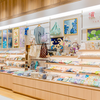
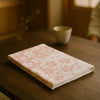
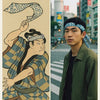
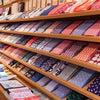
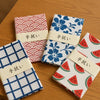
Meine Schwiegertochter ist Japanerin, also besitze auch ich ein wunderschönes Tenugui😊